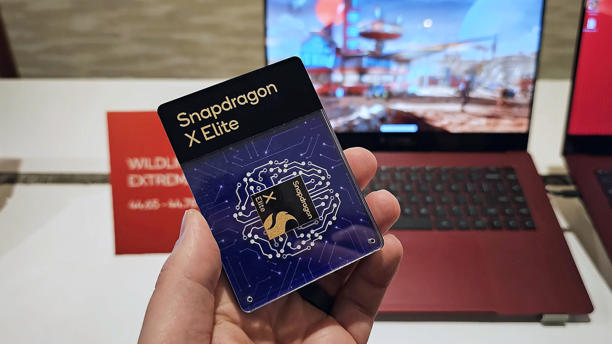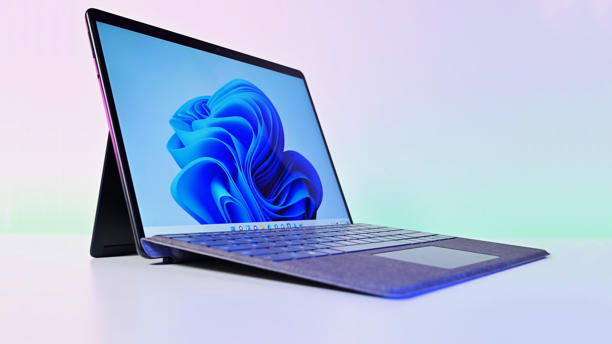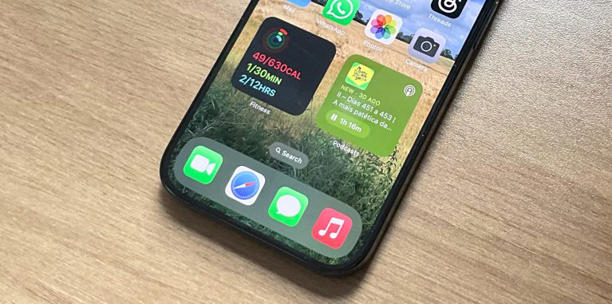Source : Internet
Do you need 5G in a laptop?
Quick answer: Having 5G or LTE mobile connectivity in a laptop is beneficial for busy professionals, frequent travelers, college students, and practically anyone who can't or doesn't want to rely on a Wi-Fi signal or wired Internet access. However, just like with a phone, you'll have to pay for a wireless data plan, and your laptop will need certain hardware to accommodate the extra wireless connection.
What is 5G?
Before stepping into some of the benefits that 5G connectivity in a laptop can afford, it's worth giving a quick rundown of some of the terms in this article.
5G is currently the fastest mobile broadband standard available to regular consumers. It operates on a Wireless Wide Area Network (WWAN) that's designed for long-distance connectivity. 5G is NOT the same as 5GHz, the latter being a radio standard that operates alongside 2.4GHz in modern Wi-Fi routers.
A WWAN differs from a Wireless Local Area Network (WLAN), which is generally used for Wi-Fi or inter-device connectivity. A Local Area Network (LAN) is the same idea, except it uses a wired connection between devices.
5G is the fifth generation, whereas 4G is the fourth generation, and so on back through the Gs. Remember when 3G seemed fast? It's not anymore, at least compared to the more modern standards.
Long Term Evolution (LTE) is a term tied in with 4G. LTE was sort of a bridge between 3G and 4G, and when 4G finally came around, the terms were bunched together and continue to commonly be used interchangeably.
5G devices — like certain laptops — operate best on a 5G network. However, when 5G isn't available, they can revert to slower networks (like 4G LTE) to maintain a connection. To connect to a mobile network, a laptop requires a SIM card (just like a phone). Physical Nano-SIM slots are common, while some devices rely on electronic SIM (eSIM) to achieve the same goal.
Standout benefits of 5G include faster data transfer speeds and lower latency compared to its predecessors.
Benefits of 5G in a laptop
Whether or not you need 5G connectivity in your next Windows laptop really depends on how you operate and what sort of device you need. Not everyone needs to be connected to the Internet at all times, and for many users, a reliable Wi-Fi or LAN connection at home is all that's required. However, there are a few big benefits to having 5G capabilities in a laptop.
Related video: STOP USING 2.4 GHz WiFi ❗ (ThioJoe)
 ThioJoe
ThioJoeAn nternet connection (almost) anywhere you go
The most obvious benefit of having 5G in a laptop is a connection to the Internet just about anywhere you go. If your phone has a signal, so too will your laptop.
Of course, if you're sailing international waters or are truly in the middle of nowhere, you'll likely find that a 5G tower isn't available, but it's still going to offer better coverage than Wi-Fi or a wired LAN connection.
5G connectivity especially makes sense for frequent travelers who spend a lot of time away from home. This naturally blends itself into the life of busy professionals who can't wait around for the next Wi-Fi hotspot to continue working.
Sure, you can use your phone for a Wi-Fi hotspot, but it's not nearly as convenient as just having the connection on your laptop. You won't have to worry so much about battery drain on your phone, and you'll have a connection immediately every time you open your laptop's lid.
Reliable wireless performance
We're continuously moving into a mobile work lifestyle, and plenty of stops along the way feature free Wi-Fi. Checking into a hotel or sitting down at a cafe to get some work done is a common occurrence, but you can't always rely on the provided Wi-Fi to offer the wireless performance you need.
For example, I enjoy taking my laptop to a local bakery/cafe to get some work done away from my home office. I appreciate the offer of free Wi-Fi, which is usually enough to handle regular web browsing and communication. However, that can change during peak hours when lots of customers are connected to the same Wi-Fi router.
Hotels and airports are the same, where there are often hundreds of people vying for some bandwidth. Having a laptop with its own 5G connection, designed from the start to handle a high density of users, means you don't have to rely on public Wi-Fi, separating you from the other users grabbing data from the same Wi-Fi network.
Improved security and privacy
Connecting to public Wi-Fi found in coffee shops, hotels, airports, and beyond also brings up security and privacy concerns. I always recommend using a VPN when connected to public Wi-Fi, but you can completely bypass many of the risks involved with your own 5G connection (I still recommend using a VPN everywhere for maximum privacy).
Your private Wi-Fi network in your home should be secure, but the same can't always be said for public Wi-Fi. Because anyone can join, bad actors may also want to snoop around. A 5G connection offers strong authentication and encryption, removing a lot of the security risks involved with public Wi-Fi.
5G and Windows on Arm
Qualcomm's upcoming Snapdragon X Elite processor (CPU) has us very excited for the future of Windows on Arm. Not only is the CPU equipped to deliver outstanding performance and efficiency for everyday computing and even gaming, but it also comes with a powerful Neural Processing Unit (NPU) with 45 TOPS of performance for AI acceleration.
5G isn't exclusive to laptops running Windows on Arm — some Intel laptops also offer 5G connectivity — but it is more common. This is partly due to Qualcomm's design choices, where its System on Chip (SoC) includes everything from CPU to wireless modem.
Qualcomm's original policy was to offer WWAN connectivity in all laptops, but that changed as laptop makers wanted to offer more affordable options. It costs more to build a 5G laptop due to the different antennas and hardware layouts.
The Snapdragon X Elite CPU has 5G capability by default, but it will still likely be up to the manufacturer whether or not they want to include the wireless standard. We'll know more when the first PCs with the Snapdragon X platform are officially revealed.
Finding the right 5G laptop for you
Windows Central Senior Editor Zac Bowden revealed in an exclusive that Microsoft is unveiling a Surface Pro 10 and Surface Laptop 6 powered by Qualcomm's Snapdragon X Elite CPU in May 2024, complementing the Intel Core Ultra-powered Surface Pro 10 for Business and Surface Laptop 6 for Business that are already available.
Whether or not these new laptops feature 5G connectivity remains to be seen, but we do know that the Business version of the Pro 10 with Intel Core Ultra will get mobile connectivity "later in 2024" according to Microsoft. If you need a Surface Pro now, the Surface Pro 9 with the SQ3 Arm-base chip is still available and supports 5G.
Looking at standouts from other manufacturers, the ThinkPad X1 Carbon (Gen 12) we reviewed will notably start offering 5G connectivity soon, and Gen 11 models are still available now with optional 5G.
HP's Dragonfly G4 is configurable with 5G, as is Dell's Latitude 7340. It's more common for business laptops to support 5G, which makes sense since these devices are usually aimed at customers willing to pay more for advanced features.
- 22
Nuclear Fusion Breakthroughs Bring Near-Limitless Energy Closer
Physicists in the U.S. have overcome two major hurdles in fusion power generation. Their discovery increases the stability of fusion reactions and brings us one step closer to making commercial fusion energy a reality.
Nuclear fusion is a process that creates energy in the same way as our sun does. It involves the smashing together of two atoms with such force that they combine into a single, larger atom, releasing huge amounts of energy along the way.
Unlike nuclear fission—the nuclear reaction that is currently used in the energy sector—fusion does not create radioactive waste. It produces three to four times more energy than fission and does not release carbon dioxide into the atmosphere, unlike burning fossil fuels. Fusion is also a very fragile process that will shut down in a fraction of a second if the correct conditions are not maintained. Therefore, there is no risk of nuclear meltdown from this reaction.
For this reaction to take place, we need to be able to mimic conditions comparable to the sun, which takes a lot of energy.
At these superhot temperatures, atoms exist in a state called a plasma, which is basically a soup of negatively charged electrons and positively charged ions that have been ripped apart by the extremely hot temperature of their surroundings.
More for You
iOS 17.5 beta 4 now available with these 5 features
As the testing cycle of iOS 17.5 is nearing its end, Apple has just released beta 5 to developers. This might be Apple's last iOS 17 update for iPhone users before it unveils iOS 18 during the WWDC 2024 keynote on June 10. That said, this roundup includes everything new so far that has been added to the iPhone in Apple's iOS 17.5 beta.
So far, the biggest change for this software is an exclusive EU feature. After Apple opened the iPhone for sideloading due to the Digital Markets Act, which adds alternative app marketplaces for EU users, Apple is now letting people from the region download apps directly from a developer's website.
Here's how the company describes this new feature:
Web Distribution, available with a software update later this spring, will let authorized developers distribute their iOS apps to EU users directly from a website owned by the developer. Apple will provide authorized developers access to APIs that facilitate the distribution of their apps from the web, integrate with system functionality, back up and restore users' apps, and more.
Downloading apps directly from the developer's website started to work with iOS 17.5 beta 2. The previous test version also added a new privacy option. On Screen Time settings and the Content & Privacy Restrictions tab, you can allow app installations from the web.
Besides that, the latest iOS 17.5 beta adds:
Related video: Apple Eyes AI Integration with OpenAI for iOS 18 Release (Opening Bell (Video))
 Opening Bell (Video)
Opening Bell (Video)- Podcasts widget change: The Podcasts widget has a new dynamic color that changes depending on what you're listening to.
- Unwanted tracking system: 9to5Mac found references to a new system that can turn off unwanted tracking accessories, such as AirTags or other third-party item trackers. This anti-stalking feature has yet to be made available.
- Apple Universal Link for eSIM install: This new feature offers a link instead of a QR code to activate an eSIM on your iPhone
BGR will let you know once we find new features with iOS 17.5 beta 4.
The post iOS 17.5 beta 4 now available with these 5 features appeared first on BGR.











































